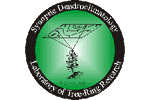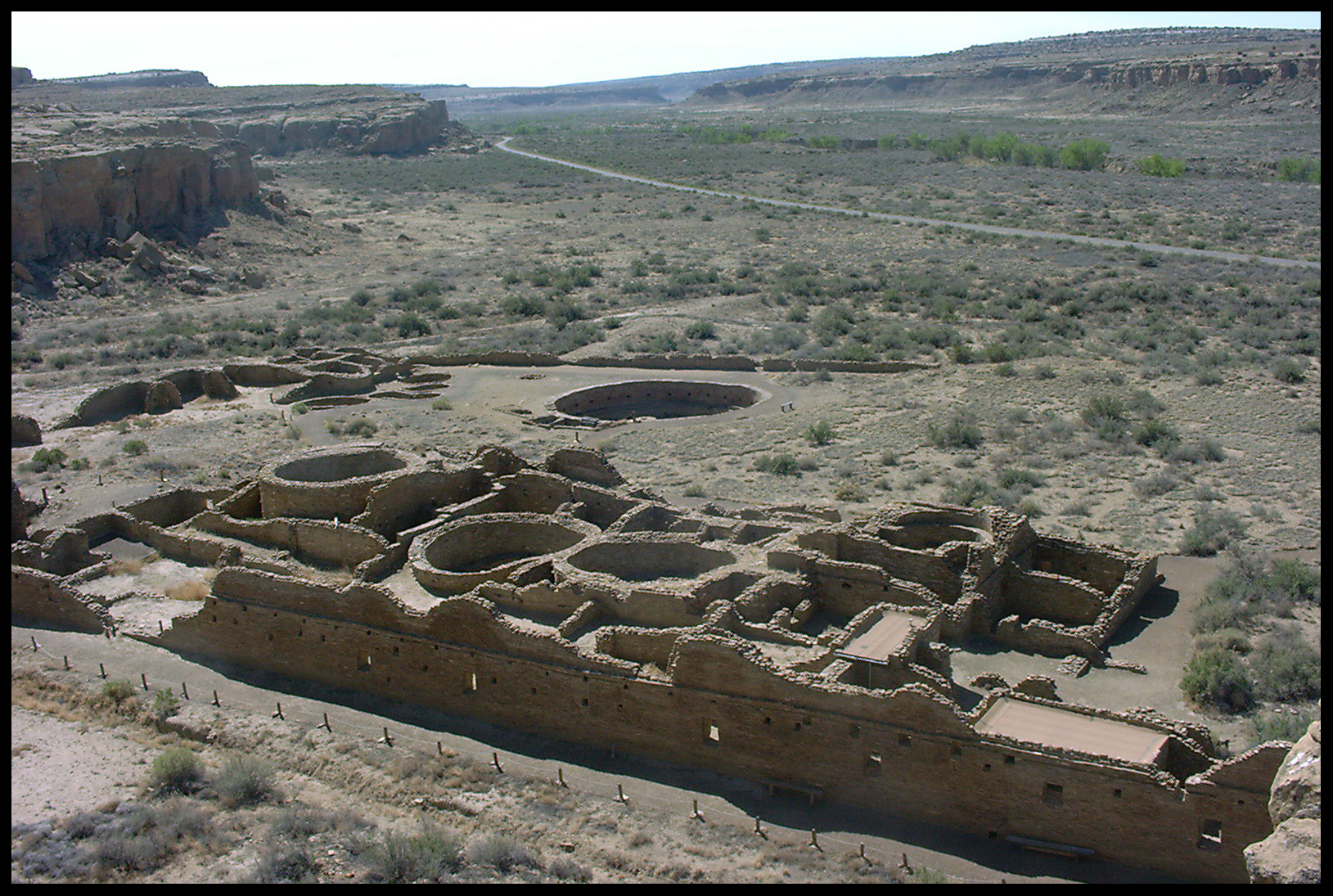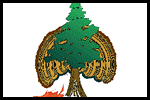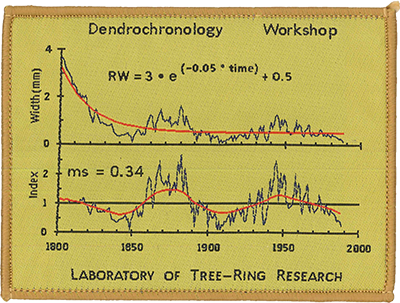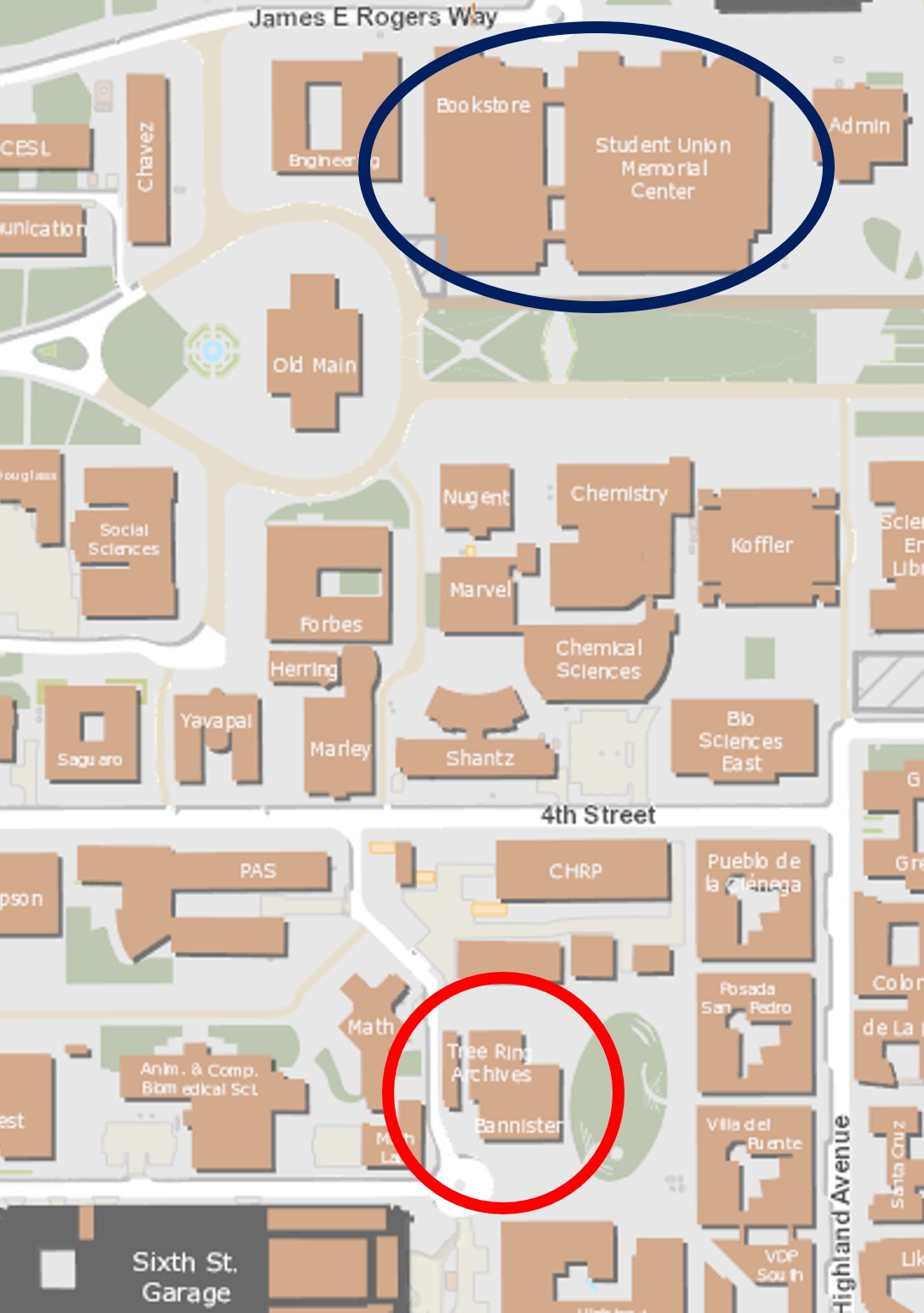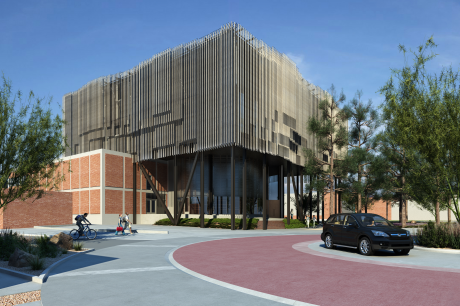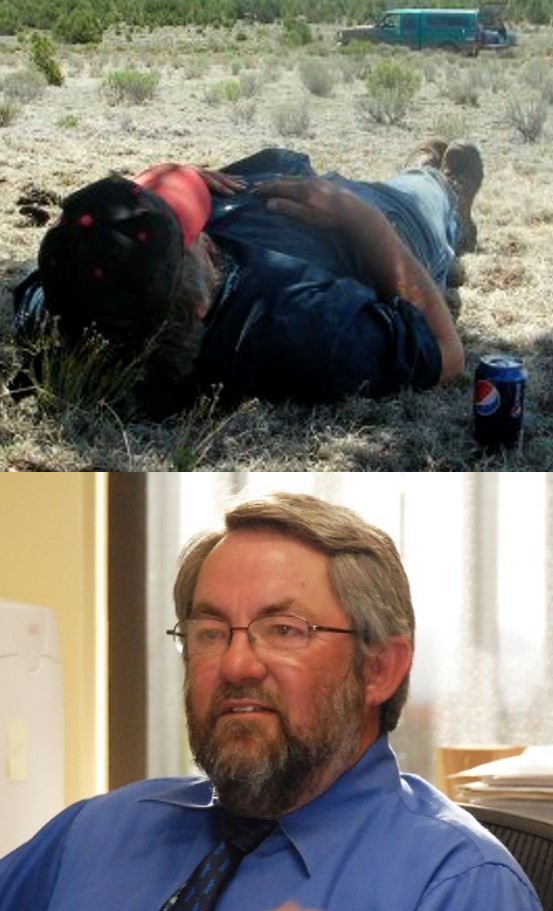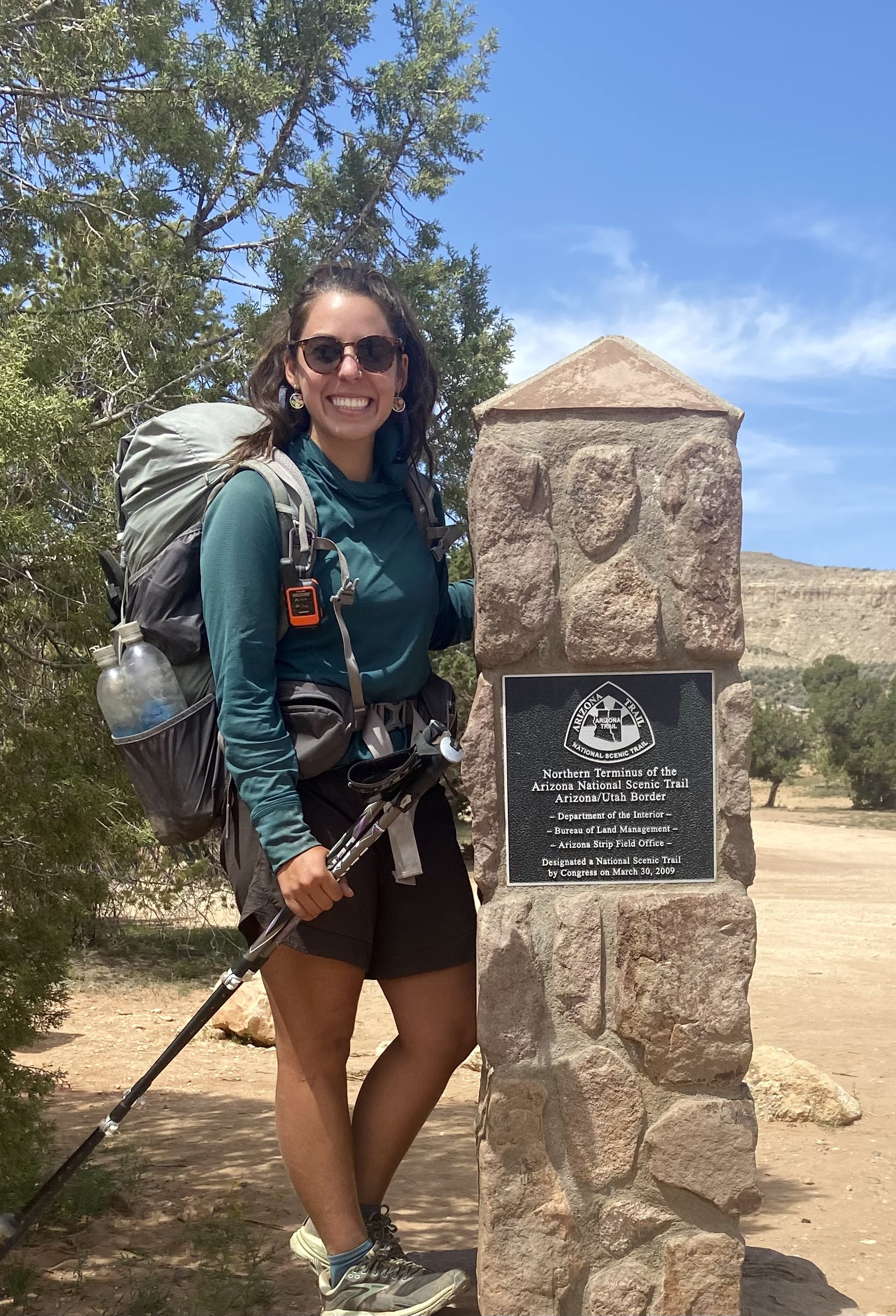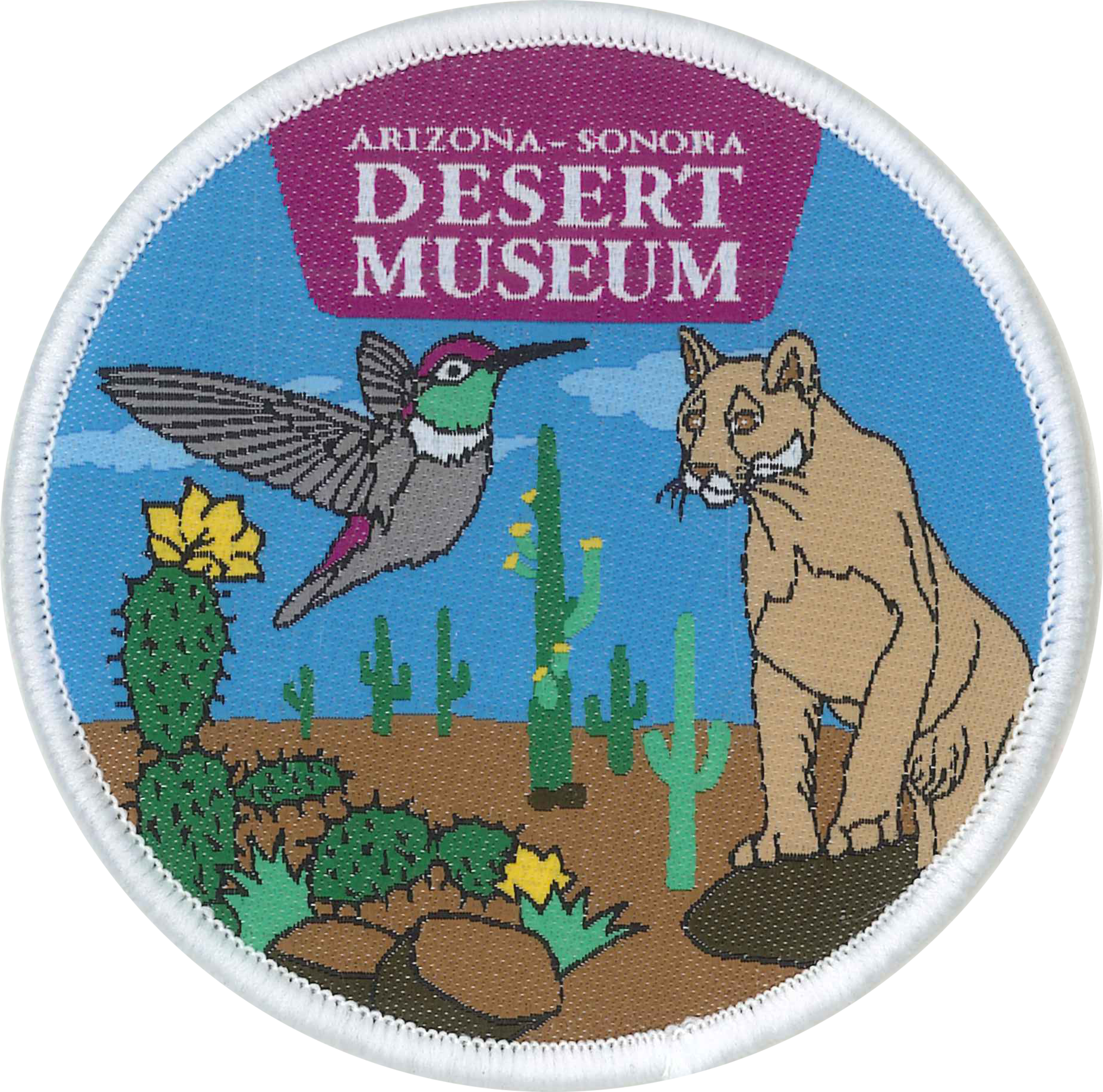What to Bring for Tucson and for Fieldwork
|
|---|
Tucson: Mid May and early June will be hot during the day and mildly warm at night.
Click here for local weather,
then click on Tucson on the map for 5-day forecast. Note: The LTRR classroom is
often kept cooler than preferred, so perhaps bring a sweater to class each day while in Tucson.
- Academic casual attire will suffice for most activities.
- Hat and sunglasses highly recommendable.
- Sunscreen also a good idea for outdoor activities lasting more than an hour.
- Personal laptop:
- Martin (LTRR IT) has provided instructions on
Wifi access while here.
- An interactive app for crossdating by skeleton plotting will be run a couple of times.
It should work on any kind of laptop, in most every browser. Before DISC, please test it out on your equipment
and let us know if it doesn't work for you:
Crossdating App.
- PC vs Mac: DPL software
runs for sure on PCs, and probably also on Macs after some work-arounds.
- Don't forget a thumb drive for easy copying, storing, and sharing of data files.
Tucson after hours:
Fieldwork: For Ecology, the Arizona White Mountains (east-central Arizona) will be cooler, with at least some chance of rain.
- As much camping gear as you have (tent, sleeping bag, pillow, everything, this will be car camping)
- Long clothing (pants and shirt) required for field days
- Hiking boots required for field days (lighter shoes ok for evening)
- Hat, sunglasses, and sunscreen essential, maybe a bandana also
- Cold weather clothing (jacket, gloves, balaclava, raingear); it will be cold at night
- Small daypack
- Personal water bottles, travel mugs
- Personal GPS units desired (but not required)
- Personal increment borer, if you have one
- Gloves for coring, as preferred
- Personal Android device, if you have one
- Personal medications (personal medical issues?)
- If you have a serious medical condition that requires daily medication, you
must (a) inform the instructor in advance of the field trip, and (b) bring at
least a 1 week supply of the medication
- Personal first-aid kit, as desired
- Insects are not usually a problem in high country of Arizona in
late spring. Perhaps the occasional mosquitos at dusk, but ticks are not as bad here
as in other places of the US. Long clothes help ward off insects. Still, feel free
to bring repellent as desired.
Overnight accommodations in the field:
- Fieldtrip travel and food expenses will be covered by the DISC fees.
- Camping gear will be needed for this trip. If you have your own tent, sleeping
bag, ground pad, personal utensils, etc., bring it all. If you need camping gear,
inform us of what you need and we'll get it from UA Outdoor Recreation.
|
Conduct
|
|---|
All DISC participants shall:
Also:
- If you must arrive late or leave early (something not encouraged), please do so quietly.
- If you have a phone (who doesn't?), please turn it off during
class. If you must talk on your phone (does anyone talk on the phone anymore?) or text message
someone during lecture, please do that outside of class.
- If you must read the newspaper (anyone?), tackle the Wildcat crossword and sudoku
puzzles (anyone?), study for other courses (occasionally), sleep (lots), surf the web,
update Facebook, Farmville, shop Ebay, play online poker, watch DVD movies, binge watch
Thrones, or do anything else not related to this course during our lecture time, please
do it elsewhere, not in class. These activities are obvious (click
here for an example) and are officially considered
disruptive.
See here for a UA student opinion about
surfing the web in class.
- Click here to see research saying people
who multitask really aren't good at multitasking.
- Racism, sexism, or violence will not be tolerated in the classroom.
- It's acceptable—even encouraged—to collaborate with fellow students
in this course. However, cheating will not be tolerated, including but
not limited to:
- Copying work of fellow students.
- Plagiarism (click here
for a definition of plagiarism).
- Special note on plagiarism: Some definitions of plagiarism
imply that all that is necessary to avoid it when copying someone
else's text is to put it in quotes and then cite the original source.
While technically this may be true and acceptable in some
academic settings, copying someone else's text (put in quotes or otherwise)
is hereby NOT acceptable in this course. This includes
text from fellow students or students from past semesters, published articles
or newspapers, and web sites. In short: Citing yes, copying and/or quoting no.
|
Special Provisions
|
|---|
- In compliance with Title III of the Americans With
Disabilities Act (1990), students who require special assistance
will be suitably accommodated. Students must be registered with
the University and a minimum notice of 5 days for such
accommodations is requested.
- Students requiring special accommodation:
Please notify the professor and provide the Disability Resource
Center letter within the first few days of the course.
- Student athletes and others who need signatures periodically:
Please notify the professor that you'll be needing signatures
generally, and please alert the professor before a particular
signing period is due so that your most up-to-date grade can be
calculated.
|
Subject to Change
|
|---|
Information contained in this course syllabus, other than the grade and absence policies,
may be subject to change with reasonable advance notice. |
Tentative Schedule
(Note: It's not expected for readings linked here to be read
ahead of time; these are mostly resources for consulting later.)
Monday, May 15
|
|---|
|
Time
|
Archaeology
|
Ecology/Climatology
|
|
8:30-8:45
|
Arrival, coffee and bagels available
|
| 8:45-9:15 |
Welcome and introductions: faculty, staff, and students |
| 9:15-10:15 |
Lecture: Physical and biological basis of tree rings (Steve Leavitt, classroom)
Speer: Botanical basis of dendrochronology
Bowyer et al.: Tree growth & woody tissue
Bowyer et al.: Composition & structure of wood cells
Bowyer et al.: Softwood structure
Bowyer et al.: Hardwood structure
Vaganov et al.: Mechanistic model of tree-ring growth
Steve's powerpoint slides
|
| 10:15-10:30 |
Break |
| 10:30-11:30 |
Uniformitariansism, ecological amplitude and limiting factors (Ron Towner, classroom) |
|
11:30-1:00
|
Break for lunch (Student Union to the north is nearby and open, see blue circle in map above,
or click here)
|
|
1:00-2:00
|
Lab: Crossdating by Skeleton Plotting
using the applet (Paul Sheppard, classroom, please have your laptop)
Sheppard: On the crossdating applet teaching tool
|
|
2:00-3:00
|
Tour of Bannister Tree-Ring Building (Paul Sheppard)
|
|
3:00-4:00
|
Crossdating Zuni samples (Ron, conference room)
|
Equipment, food, and logistical planning for the field (Ceci & Paul, classroom)
|
|
4:00-5:00
|
Potential dendrochronology projects in the Arizona White Mountains (Paul Sheppard, Classroom)
Lecture: Basic fieldnotes (bring a rite-in-the-rain booklet and pencils) (Paul Sheppard, classroom)
ODK instructions for DISC
Brewer-Guiterman: ODK fieldwork
|
|
Tuesday, May 23
|
|---|
| Time |
Archaeology |
Ecology/Climatology |
| 9:00-9:45 |
Lecture: Recognizing insect signals in wood and ring-width series (Ann Lynch, classroom)
Swetnam et al.:
Using dendrochronology to measure defoliated trees
Lynch:
What tree-ring reconstruction says about defoliator outbreaks
O'Connor et al.:
Post-fire dynamics affect spruce beetle outbreaks
|
| 9:45-10:45 |
Lecture: Climate change in the Four Corners and adjacent regions: Implication for
past human occupation on the southern Colorado Plateau (Jeff Dean, classroom)
• Dean &
Funkhouser: Dendroclimate of the Southern Colorado Plateau
• Jeff's lecture slides
|
| 10:45-11:00 |
break |
| 11:00-12:00 |
History of SW Dendroarchaeology (Ron Towner, Conference room) |
Lecture: Dendroentomology II (Ann Lynch, Classroom)
|
| 12:00-1:00 |
Break for lunch |
| 1:00-4:30 |
Wood shop: safety, mounting cross-sections, sanding samples (Chris)
• Minor & Arizpe: Trimming down cross-sections, sanding cores
Sanding paper
• Tree-ring sanding cartoon |
| 4:30-5:00 |
A student presentation: background and research (bring a powerpoint with a few
slides, e.g., a map, a couple field shots, research objectives), and expect to
fill ~5-10 minutes of presentation and Q&A time. Everyone participates. Today: Chau. |
|
Wednesday, May 24
|
|---|
| Time |
Archaeology |
Ecology/Climatology |
| 9:00-10:15 |
??? |
Lecture: Marking rings, dot system (Paul Sheppard, classroom)
Ring markings
Fine sanding cores by hand, dotting |
| 10:15-10:30 |
Break |
| 10:30-11:45 |
??? |
Lecture: Telervo, background and demo (Peter Brewer, classroom)
|
| 11:00-12:00 |
Lecture: Mediterranean dendroarchaeology (Charlotte Pearson, confirmed, Conference room)
readings to link?
|
Paleo Data Search:
Start here for searching for tree-ring data on the ITRDB
Right click to download a couple existing ponderosa pine crns from the White Mountains:
• Don Graybill, end year = 1986
• Dan Griffen, end year = 2008
DPL, a DOS program that includes BAR, barplotting
Try BAR on the above chronologies, for example
Note: To print DPL outputs:
- Open in Word
- Select all
- Switch to landscape orientation
- Set all margins to 0.5"
- Switch font to Courier, size 8
- Add highlighting, text boxes, as desired
- Print in color, double-sided, long edge
- Mic drop
|
| 12:00-1:00 |
Break for lunch |
| 1:00-4:30 |
Sample preparation and begin crossdating (Classroom) |
Lab: Continue crossdating samples |
| 4:30-5:00 |
A student presentation: background and research (bring a powerpoint with a few
slides, e.g., a map, a couple field shots, research objectives), and expect to
fill ~5-10 minutes of presentation and Q&A time. Everyone participates.
Today: Dan Griffen,
rock star video on dendroclimatology in California. |
|
Thursday, May 25
|
|---|
| Time |
Archaeology |
Ecology/Climatology |
| 9:00-9:45 |
Lecture: Introduction to measuring ring width (paul Sheppard, classroom)
Then: Starting a measuring session (prof, Lab room 314)
Measuring rings
Paul's paper sample
|
| 9:45-10:45 |
Lecture: Dendroarchaeology and human behavior (Jeff Dean)
Dean: Behavioral error in archaeological tree-ring dating
|
Measuring and verifying (Paul Sheppard, Classroom)
Grissino-Mayer: Measurement checking
Verify for Windows
Paul vs Paul verification output
Paul's rwl measurement file of the photocopied "core" |
| 10:45-11:00 |
break |
| 11:00-12:00 |
Lecture: Dating Kiva Murals of SE Utah (Nick Kessler, confirmed, Conference room)
readings to link? |
Lecture: Data formats (Paul Sheppard, Classroom)
TRiDaS Website
Jansma et al.: TRiDaS |
| 12:00-1:00 |
Break for lunch |
| 1:00-4:30 |
Sample preparation and crossdating
| Sample measuring
• EDRM, the DPL app to edit ring measurement files
|
| 4:30-5:00 |
A student presentation: background and research (bring a powerpoint with a few
slides, e.g., a map, a couple field shots, research objectives), and expect to
fill ~5-10 minutes of presentation and Q&A time. Everyone participates. Today: LTRR Happy Hour.
Also, click here to order an LTRR t-shirt for yourself. |
|
Friday, May 26
|
|---|
| Time |
Archaeology |
Ecology/Climatology |
| 9:00-9:45 |
Lecture: Time-series properties (interannual variability & autocorrelation) (Paul Sheppard, Classroom)
Douglass: Mean sensitivity
Strackee & Jansma: Mean sensitivity
Bunn: Intro to dplR
Biondi & Qeadan: Gini coefficient
Bunn et al.: Mean sensitivity
Spreadsheet of interannual variability measures
Ed Wright demo of indices of interannual variability
Yamaguchi: Crosscorrelation of tree-ring series
Spreadsheet of cross-correlations
|
| 9:45-10:45 |
Dateless archaeology (Ron Towner, Conference room) |
COFECHA (Paul Sheppard, classroom)
• The program executable
• A text file of info
• Holmes: Computer quality control
• Grissino-Mayer: COFECHA manual
• Another COFECHA manual
COFECHA Example 1
• Sunset Crater data, with issues
• Output, with issues
COFECHA Example 2
• Sunset Crater data, cleaned up
• Output, cleaned up
COFECHA Example 3
• Sunset Crater data, undated
• Output, undated #1
• Output, undated #2
|
| 10:45-11:00 |
break |
| 11:00-12:00 |
Demonstration: Tellervo (Peter Brewer, confirmed, Room 414?)
Brewer: Tellervo
Tellervo download & access instructions
|
| 12:00-1:00 |
Break for lunch |
| 1:00-4:30 |
Measure and COFECHA
refs? |
| 4:30-5:00 |
A student presentation: background and research (bring a powerpoint with a few
slides, e.g., a map, a couple field shots, research objectives), and expect to
fill ~5-10 minutes of presentation and Q&A time. Everyone participates. Today: .
Also, click here to see an 8 x 12 version
of the field trip group photo, or here for
a 5 x 7 version. Let Paul know of any name errors and/or style issues.
If you'd like a board print of either one of these to take home, board prints can be done at Walgreen's, and
for 60% off if we order all at the same time. The 8x10 print would cost $24 plus tax, and the 5x7 print
would cost $15 plus tax.
|
|
Friday, June 2
|
|---|
| Time |
Archaeology |
Ecology/Climatology |
| Morning |
Preparation of group presentations |
| 12:00-1:00 |
Break for lunch |
| 1:00-2:00 |
Final preparation of group presentations |
| 2:00-4:00 |
Group presentations, all of LTRR invited |
| 4:00-5:00 |
Presentation of certificates (David Frank), acknowledgments & concluding remarks
(any and all instructors who wish to comment)
A video postcard of DISC Ecology 2023. Five minutes long, best with headphones. |
5:00-6:00
Happy Hour |
Course evaluation, completion of 2023 DISC |
| 6:30-9:00 |
Celebration gathering: 6:30 PM at Borderlands
Brewing Company, 119 E. Toole Ave. The Blacktop Grill food truck will be there and serving. |

